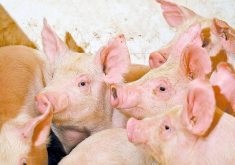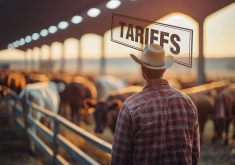Alberta Agriculture and Forestry has released its new Relocation of Livestock Facilities Planning Guide.
“Access to water was a major concern when many farmsteads were established and today producers are increasingly concerned with the impact their site has on the watershed, and the perceptions of their neighbours and other water users,” said Chris Ullmann, a provincial confined feeding operation extension specialist. “Proactive producers may have questions about improving the site they have or how to move to a better location.”
The new relocation guide helps identify environmental risks at current livestock facilities, potential mitigation measures, and steps to consider when relocating facilities.
Read Also

Horns aren’t unlocking anytime soon on livestock transport standards
Standards good enough meet the definition of “humane” animal transportation still vary widely between what what industry wants, what animal rights advocates want and, between the two, what federal regulators decide is good enough.
“The information in the guide is really for those facilities that are located close to water resources and where the producer isn’t sure what the environmental impact to that site might be,” said Ullmann. “It takes them through a process of looking at the site, assessing it and looking at ways to improve it, such as mitigation. Sometimes, these options just aren’t viable, and for those cases, the guide has information to help the producer pick a new site.”
The guide also contains case studies and a worksheet for estimating the cost of relocating a facility.
The Relocation of Livestock Facilities Planning Guide can be downloaded at agriculture.alberta.ca. Hard copies can be ordered by calling 780-427-0391 or emailing [email protected].














